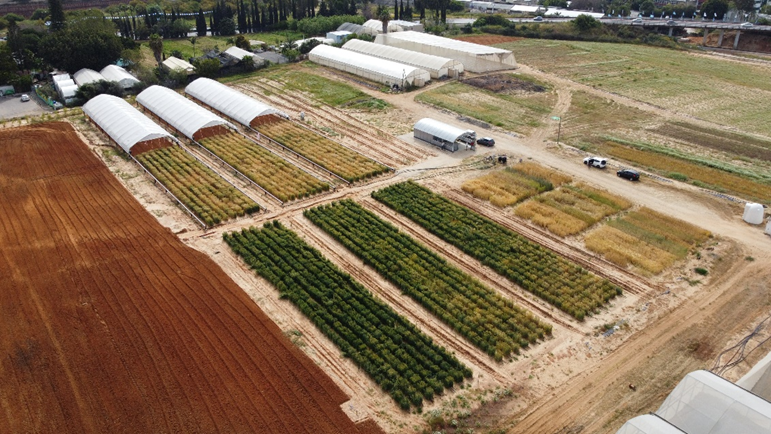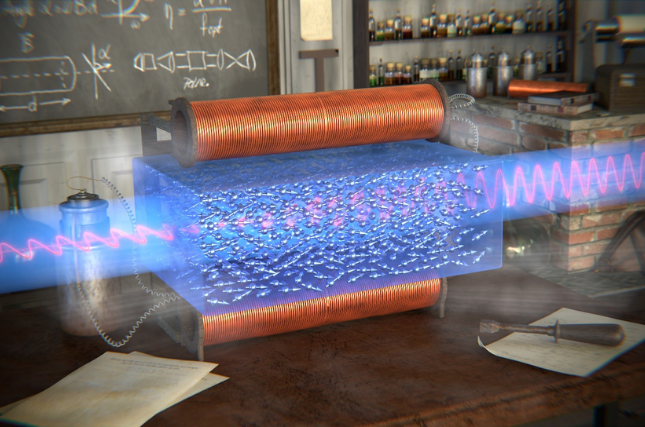
June 10, 2025 – A study led by researchers at the Robert H. Smith Faculty of Agriculture, Food and Environment at the Hebrew University of Jerusalem (HU) and the Volcani Institute changes the way scientists uncover the secrets of wheat resilience. By using drones equipped with advanced thermal and hyperspectral cameras, the team has found a faster, more precise method to identify wheat varieties that can thrive in hot and dry climates, an urgent priority in the face of global food insecurity and climate change.
The study, led by Ph.D. candidate Roy Sadeh under the supervision of Dr. Ittai Herrmann and Prof. Zvi Peleg from HU’s Institute of Plant Sciences and Genetics in Agriculture, used drone flights over wheat experiments located at the rain-out shelter at the Pheno-IL research & education facility for crop stress phenomics to collect detailed images capturing both heat emitted and light reflected from the plants. These images allowed researchers to estimate how well different wheat varieties manage water through their stomata, tiny pores on the leaves that regulate moisture and gas exchange. Traits like leaf area index and chlorophyll content were also tracked.
With the help of machine learning models, the research team analyzed this data across two growing seasons. They successfully linked these plant traits to specific regions in the wheat genome, identifying 16 genetic markers tied to better performance under optimal and drought conditions. These markers were further validated in a follow-up field trial.
“Until now, measuring stomatal conductance, the plant’s ability to regulate water—was slow and required manual tools,” said Roy Sadeh, first author of the study. “This drone-based approach offers a fast and powerful new way to identify drought-tolerant plants, without touching the plants.”
The findings offer a practical path forward for breeders seeking to develop high-performing, climate-resilient wheat. Integrating drone technology with genetic analysis could dramatically accelerate breeding, helping agriculture keep pace with global food demand and changing environmental conditions.
The research involved 300 diverse wheat genotypes grown under optimal and drought conditions in a rain-out shelter facility. The team used support vector machine models to estimate plant traits based on drone-collected imagery, achieving a 28% improvement in accuracy for water-use estimation. The study represents the first time that UAV-based stomatal conductance measurements have been used to map genetic markers in wheat.
As climate change continues to strain global food systems, innovations like this offer a powerful way to future-proof agriculture. By combining cutting-edge technology with genetic insight, this research paves the way for faster development of wheat varieties that can withstand heat, drought, and other climate stresses—helping ensure food security for generations to come.
This research was supported by the Israeli Council for Higher Education (Project: Future Crops for Carbon Farming), the Dutch Ministry of Foreign Affairs, and the Chief Scientist of the Israeli Ministry of Agriculture and Food Security. The research paper titled “UAV-borne hyperspectral and thermal imagery integration empowers genetic dissection of wheat stomatal conductance” is now available in Computers and Electronics in Agriculture and can be accessed here.
Researchers:
Roy Sadeh1, Victor Alchanatis2, Roi Ben-David2, Zvi Peleg1, Ittai Herrmann1
Institutions:
1) Robert H. Smith Faculty of Agriculture, Food and Environment, The Hebrew University of Jerusalem
2) Agricultural Research Organization, Volcani Institute



